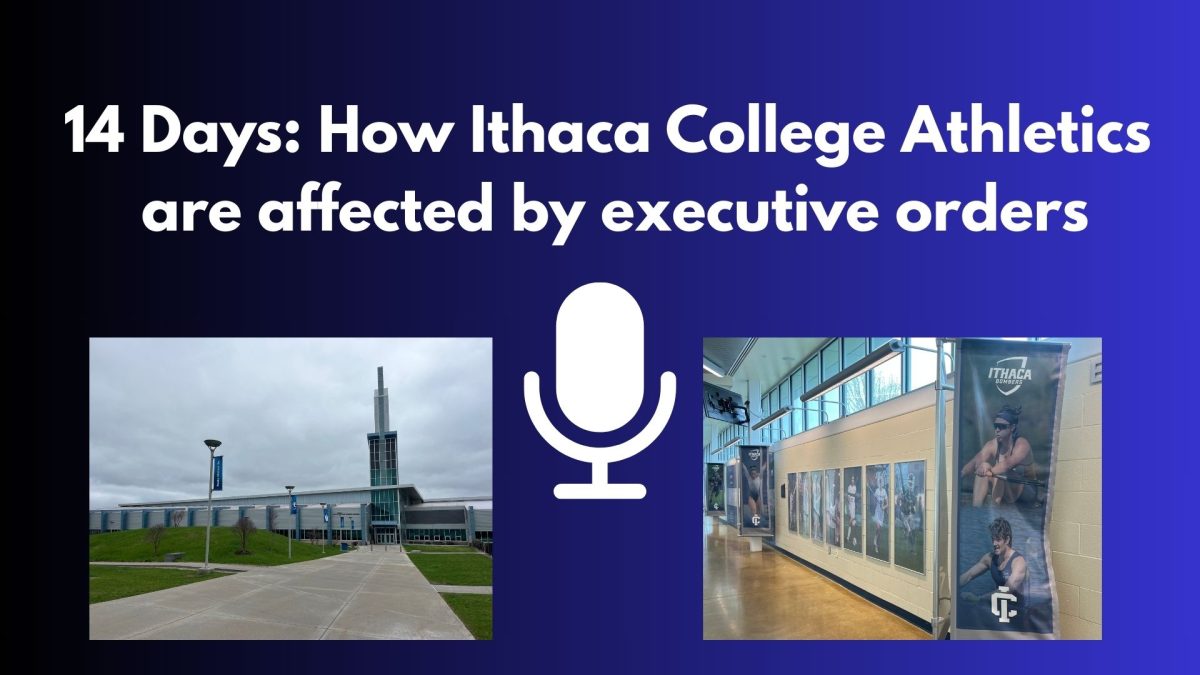“When I found out that you’re able to actually come in and volunteer at the new pantry, I saw it as a really great opportunity to give back and get back on campus,” Benner said.
The establishment of a permanent pantry was just one of the college’s responses to combating food insecurity among students. Currently, the college has three main initiatives tackling the issue: the permanent pantry, the Swipe Out Hunger program, and the mobile food pantry through the Food Bank of the Southern Tier.
Despite these efforts, food insecurity persists as there has been increased student use of resources like the pantries and Swipe Out Hunger.
In late October 2019, the college’s food insecurity committee began collaborating with IC’s Office of Analytics and Institutional Research (AIR) to analyze information from all three of the previously mentioned initiatives.
Barbie Bargher, assistant director of Student Financial Services and site coordinator for the mobile food pantry, said the research will eventually come out in a report, but the date of release has yet to be determined.
Bargher said the study will focus on data from the current and previous semesters, so researchers can explore whether the same students are utilizing all three of the food insecurity resources on campus.
The Permanent Pantry
Doreen Hettich-Atkins, director of Strategic Planning and Administration, said the permanent food pantry has been heavily used since its establishment in February 2019.
“We’re open two and a half hours a week, and we’re averaging nearly a hundred students coming in those two and a half hours,” Hettich-Atkins said.
Hettich-Atkins added that the food insecurity committee plans to propose a budget initiative that will allow student staffing at the permanent pantry. She said this could help increase accessibility to the permanent pantry by having it open longer than two and a half hours each week.

(Nicole Pimental/Ithaca Week)
The food at the permanent pantry is supplied through donations by students, faculty and staff, in addition to financial donations. Financial donations are used to purchase food through the college’s partnership with the Food Bank of the Southern Tier, according to Hettick-Atkins. She also said that the pantry receives shipments every few weeks of approximately 1,000 pounds of food each delivery. Leftover food received from the mobile pantry is also brought to the permanent pantry.
As a student who used the mobile pantry, Benner said providing a food resource that is available more than once a month is a great step in moving forward the fight against food insecurity.
As of September 2018, more than 650 food pantries had opened up or were in development on campuses nationwide, according to a report by the Government Accountability Office.
Mobile Food Pantry
As the site coordinator for the mobile food pantry, Bargher’s job is to oversee the monthly event. This partnership with the Food Bank of the Southern Tier began in March 2017, and Bargher said the event brings in an average of 100 to 125 clients.
She noted that there had been only one case in which the food bank ran out of food, and there were 254 clients that day.
At the most recent mobile food pantry, held on Nov. 5, Barger said the food bank planned to bring food for 140 families, and the event serviced 169 clients.
Swipe Out Hunger
The Swipe Out Hunger program allows students to donate swipes from their meal plans to students who are food insecure. This is the college’s third semester participating in the program.
As of Fall 2019, Bargher said, 735 guest swipes have been donated, and 495 swipes have been used by students in need. This is a significant increase in swipe use in comparison to the first semester of the program, in which about 318 of 949 donated swipes were utilized.

(Nicole Pimental/Ithaca Week)
The Impact
From her experience, both as a student who experienced food insecurity and a volunteer in the permanent food pantry, Benner said she understands the importance of giving students access to these resources.
“One of the incorrect notions I find is that, if you are able to come to college and afford to go to college, you can probably afford to buy groceries. And that’s just not the case,” Benner said. “Having these resources is just so important to students socially, economically, educationally.”






